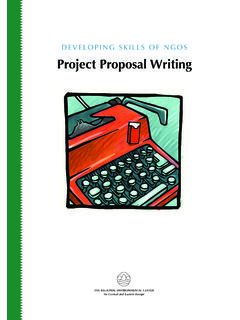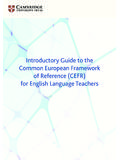Transcription of Policy and practice - WHO
1 867 Bulletin of the world health organization | November 2007, 85 (11)Abstract Much biomedical research is observational. The reporting of such research is often inadequate, which hampers the assessment of its strengths and weaknesses and of a study s generalizability. The Strengthening the Reporting of Observational Studies in Epidemiology (STROBE) Initiative developed recommendations on what should be included in an accurate and complete report of an observational study. We defined the scope of the recommendations to cover three main study designs: cohort, case-control and cross-sectional studies. We convened a two-day workshop, in September 2004, with methodologists, researchers and journal editors to draft a checklist of items. This list was subsequently revised during several meetings of the coordinating group and in e-mail discussions with the larger group of STROBE contributors, taking into account empirical evidence and methodological considerations. The workshop and the subsequent iterative process of consultation and revision resulted in a checklist of 22 items (the STROBE Statement) that relate to the title, abstract, introduction, methods, results and discussion sections of articles.
2 Eighteen items are common to all three study designs and four are specific for cohort, case-control, or cross-sectional studies. A detailed Explanation and Elaboration document is published separately and is freely available on the web sites of PLoS Medicine, Annals of Internal Medicine and Epidemiology. We hope that the STROBE Statement will contribute to improving the quality of reporting of observational of the world health organization 2007;85:867 traduction en fran ais de ce r sum figure la fin de l article. Al final del art culo se facilita una traducci n al espa Strengthening the Reporting of Observational Studies in Epidemiology (STROBE) Statement: guidelines for reporting observational studies*Erik von Elm,a Douglas G Altman,b Matthias Egger,a,c Stuart J Pocock,d Peter C G tzsche e & Jan P Vandenbrouckef for the STROBE Initiative . Policy and practice * In order to encourage dissemination of the STROBE Statement, this paper will also be published and made freely available by Annals of Internal Medicine, BMJ, Epidemiology, The Lancet, and PLoS Medicine and Preventive Medicine.
3 The authors jointly hold the copyright of this paper. For details on further use, see STROBE web site ( ).a Institute of Social and Preventive Medicine (ISPM), University of Bern, Finkenhubelweg 11, CH-3012 Bern, Switzerland. Correspondence to Erik von Elm (e-mail: Centre for Statistics in Medicine, University of Oxford, Oxford, Department of Social Medicine, University of Bristol, Bristol, England. d London School of Hygiene and Tropical Medicine, University of London, London, Nordic Cochrane Centre, Copenhagen, Department of Clinical Epidemiology, Leiden University Hospital, Leiden, the : (Submitted: 20 June 2007 Final revised version submitted: 13 August 2007 Accepted: 20 August 2007)IntroductionMany questions in medical research are in-vestigated in observational Much of the research into the cause of diseases relies on cohort, case-control or cross-sectional studies. Observational studies also have a role in research into the benefits and harms of medical Ran-domized trials cannot answer all important questions about a given intervention.)
4 For example, observational studies are more suitable to detect rare or late adverse ef-fects of treatments, and are more likely to provide an indication of what is achieved in daily medical should be reported transpar-ently so that readers can follow what was planned, what was done, what was found, and what conclusions were drawn. The credibility of research depends on a critical assessment by others of the strengths and weaknesses in study design, conduct and analysis. Transparent reporting is also needed to judge whether and how results can be included in systematic ,5 However, in published observational research important information is often missing or unclear. An analysis of epide-miological studies published in general medical and specialist journals found that the rationale behind the choice of potential confounding variables was often not Only few reports of case-control studies in psychiatry explained the methods used to identify cases and In a survey of longitudinal studies in stroke research, 17 of 49 articles (35%) did not specify the eligibility Others have argued that without sufficient clarity of reporting, the benefits of research might be achieved more slowly,9 and that there is a need for guidance in reporting observational ,11 Recommendations on the report-ing of research can improve reporting quality.
5 The Consolidated Standards of Reporting Trials (CONSORT) Statement was developed in 1996 and revised five years Many medical journals sup-ported this initiative,13 which has helped to improve the quality of reports of randomized ,15 Similar initiatives have followed for other research areas for the reporting of meta-analyses 868 Bulletin of the world health organization | November 2007, 85 (11) Policy and practiceSTROBE guidelines for reporting observational studiesErik von Elm et randomized trials16 or diagnostic We established a network of methodologists, researchers and journal editors to develop recommendations for the reporting of observational research: the Strengthening the Reporting of Observational Studies in Epidemiology (STROBE) and use of the STROBE StatementThe STROBE Statement is a checklist of items that should be addressed in articles reporting on the three main study designs of analytical epidemiology: cohort, case-control and cross-sectional studies.
6 The intention is solely to provide guidance on how to report observational research well: these recommendations are not prescriptions for designing or conducting studies. Also, while clarity of reporting is a prerequisite to evaluation, the checklist is not an instrument to evaluate the quality of observational we present the STROBE State-ment and explain how it was developed. In a detailed companion paper, the Explanation and Elaboration article,18 20 we justify the inclusion of the different checklist items, and give methodological background and published examples of what we consider transparent report-ing. We strongly recommend using the STROBE checklist in conjunction with the explanatory article, which is available freely on the web sites of PLoS Medicine ( ), Annals of Internal Medicine ( ) and Epidemiology ( ).Development of the STROBE StatementWe established the STROBE Initiative in 2004, obtained funding for a work-shop and set up a web site ( ).
7 We searched textbooks, bibliographic databases, reference lists and personal files for relevant material, including previous recommendations, empirical studies of reporting and arti-cles describing relevant methodological research. Because observational research makes use of many different study de-signs, we felt that the scope of STROBE had to be clearly defined early on. We decided to focus on the three study designs that are used most widely in ana-lytical observational research: cohort, case-control and cross-sectional organized a two-day workshop in Bristol, the United Kingdom, in Sep-tember 2004. Twenty-three individu-als attended this meeting, including editorial staff from Annals of Internal Medicine, BMJ, Bulletin of the world health organization , International Jour-nal of Epidemiology, JAMA, Preventive Medicine and The Lancet as well as epi-demiologists, methodologists, statisti-cians and practitioners from Europe and North America.
8 Written contributions were sought from 10 other individuals who declared an interest in contribut-ing to STROBE, but could not attend. Three working groups identified items deemed to be important to include in checklists for each type of study. A pro-visional list of items prepared in advance (available from our web site) was used to facilitate discussions. The three draft checklists were then discussed by all participants and, where possible, items were revised to make them applicable to all three study designs. In a final plenary session, the group decided on the strat-egy for finalizing and disseminating the STROBE the workshop we drafted a combined checklist including all three designs and made it available on our web site. We invited participants and additional scientists and editors to comment on this draft checklist. We subsequently published three revisions on the web site, and two summaries of comments received and changes made.
9 During this process the coordinating group ( the authors of the present paper) met on eight occasions for one or two days, and held several telephone conferences to revise the checklist and to prepare the present paper and the Explanation and Elaboration 20 The coordinating group invited three additional co-authors with method-ological and editorial expertise to help write the Explanation and Elaboration paper, and sought feedback from more than 30 people, who are listed at the end of this paper. We allowed several weeks for comments on subsequent drafts of the paper and reminded collaborators about deadlines by componentsThe STROBE Statement is a checklist of 22 items that we consider essential for good reporting of observational studies (see Table 1). These items relate to the article s title and abstract (item 1), the introduction (items 2 and 3), methods (items 4 12), results (items 13 17), discussion sections (items 18 21) and other information (item 22 on fund-ing).
10 Eighteen items are common to all three designs, while four (items 6, 12, 14 and 15) are design-specific, with dif-ferent versions for all or part of the item. For some items (indicated by footnote a), information should be given separately for cases and controls in case-control studies, or exposed and unexposed groups in cohort and cross-sectional studies. Although presented here as a single checklist, separate checklists are available for each of the three study de-signs on the STROBE web and limitationsThe STROBE Statement was developed to assist authors when writing up ana-lytical observational studies, to support editors and reviewers when considering such articles for publication, and to help readers when critically appraising published articles. We developed the checklist through an open process, tak-ing into account the experience gained with previous initiatives, in particular CONSORT. We reviewed the relevant empirical evidence as well as method-ological work, and subjected consecutive drafts to an extensive iterative process of consultation.















